Suchergebnisse für "Factsheet: Energietechnologien gestalten, die für alle sinnvoll und nutzbar sind"
IEA DHC: Artificial Intelligence for Failure Detection and Forecasting of Heat Production and Heat demand in District Heating Networks

Abschlussbericht des Projektes “AI for Failure Detection and Heat Demand and Production Forecast”
Kramer W., Vallée M., Lamaison N., Gölzhäuser S., Wissocq T., Gaoua Y., Bitterling M., Frison L.
Herausgeber: IEA DHC, 2023
Englisch
SQUARE
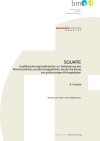
Qualitätssicherungsmaßnahmen zur Verbesserung des Wohnraumklimas und der Energieeffizienz bei der Sanierung von großvolumigen Wohngebäuden
Schriftenreihe
49/2010
A. Knotzer
Herausgeber: BMVIT
Deutsch, 109 Seiten
Downloads zur Publikation
Tage des Passivhauses 2019 in Innsbruck
8. November 2019, Treffpunkt um 08:30 Uhr
IIG - Innsbrucker Immobiliengesellschaft, Roßaugasse 4, 6020 Innsbruck, 2. Stock
Bio bitumen - bitumen substitute based on renewable raw materials and resulting in energy efficient asphalt
Development of a binder for asphalt based on renewable raw materials. Studies to choose the ideal natural base product, regarding the aspect of utilization of remaining material and the elaboration of practical methods of synthesis were made.
Das Schiestlhaus Am Hochschwab - Alpiner Stützpunkt In Passivhaustechnologie
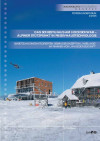
Umsetzung eines integrierten Gebäudekonzepts is „Insellage“im Rahmen von „Haus der Zukunft“
Forschungsforum
2/2005
Herausgeber: BMVIT
Deutsch, 6 Seiten
Downloads zur Publikation
Post City Linz – Biodiversität im CO2 neutralen Quartier (Green.diversity.Linz)
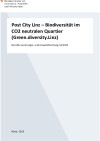
Mit dem Sondierungsvorhaben "Post City Linz" soll gezeigt werden, dass eine derzeit wenig attraktive Industriebrache durch einen innovativen Nutzungsmix aus Büro, Gewerbe, Hotel und Wohnen zu einem mikroklimatisch ambitionierten, energie- und ressourceneffizienten Quartier umgewandelt werden kann. Der Schwerpunkt liegt in der Integration einer Biodiversitätsförderung, einer CO2-neutralen Energieversorgung und innovativem Energiemanagement im Quartier, animal aided design sowie dem Regenwassermanagement am Prinzip der „Schwammstadt”.
Schriftenreihe
32/2025
M. Majcen, T. Weiss, I. Haymerle, S. Kotrba, S. Formanek, A. Boden, L. Boß, S. Nussmüller, M. Stefan, D. Wernig, A. Putrih, A. Frey, P. Doppler, H. Engelke
Herausgeber: BMIMI
Deutsch, 159 Seiten
Downloads zur Publikation
Symposium: Kurs Zukunft - Innovation durch Nachhaltigkeit
27. Sep 2005
Wirtschaftskammer Österreich - Julius Raab SaalWien, AT
Präsentation von technologischen Erfolgsbeispielen aus der Programmlinie "Fabrik der Zukunft", sowie neuer methodischer Ansätze zur Bewertung von Nachhaltigkeitsaktivitäten als Grundlage der Nachhaltigkeitsberichterstattung. Abschließende Podiumsdiskussion.
Tage des Passivhauses stießen auf großes Interesse
Über 5000 Besucher stürmten 110 "Haus der Zukunft"-Demogebäude und Passivhäuser in ganz Österreich.
Ausstellung: Baufamilien-Tag
31. Jan 2010
Sonnenplatz Großschönau
3922, Großschönau, AT
Der Sonnenplatz Großschönau veranstaltet am 31. Jänner 2010 erneut einen Baufamilien Tag. Dieses Mal zum Schwerpunktthema "Photovoltaik/Solaranlagen".
The Potential and Challenges of Drop-in Biofuels 2014

Der Bericht beschreibt den Stand von Drop-in Biofuels, deren Potentiale und mögliche Hürden.
Herausgeber: IEA Bioenergy Task 39
Englisch, 199 Seiten
Info-Veranstaltung: Baufamilientag zum Schwerpunktthema "Wohnraumlüftung"
27. Sep 2009
Sonnenplatz Großschönau
Großschönau, AT
Der Sonnenplatz Großschönau veranstaltet am 27. September 2009 erneut einen Baufamilien Tag. Dieses Mal zum Schwerpunktthema "Wohnraumlüftung".
ERA-Net SUSPRISE: Pilotausschreibung gestartet
Gesucht werden innovative Projekte zu den Themen Wassertechnologien und effiziente Nutzung von Rohmaterialien.
Symposium: Energiezukunft unserer Gemeinden
31. Mai 2012
Sonnenplatz 13922 Großschönau, AT
Der TDW Großschönau veranstaltet ein Symposium zum Thema EnergieEinsparung-EnergieEffizienz-ErneuerbareEnergie im Kompetenzzentrum am Sonnenplatz Großschönau.
(BIO) Gas - Inseltankstelle
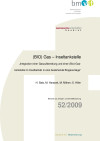
"Integration einer Gasaufbereitung und einer (Bio)-Gastankstelle im Inselbetrieb in eine bestehende Biogasanlage"
Schriftenreihe
52/2009
H. Bala, M. Harasek, M. Miltner, S. Hiller
Herausgeber: BMVIT
Deutsch, 88 Seiten
Downloads zur Publikation
Energieforschungsausgaben im internationalen Vergleich 2018
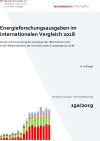
Anteil und Entwicklung der Ausgaben der öffentlichen Hand in den Mitgliedstaaten der Internationalen Energieagentur (IEA).
Schriftenreihe
19a/2019
A. Indinger
Herausgeber: BMVIT
Deutsch, 10 Seiten
Downloads zur Publikation
IEA-EBC Newsletter issue 62, November 2015
Der Newsletter stellt aktuelle Aktivitäten des IEA-EBC-Programms und Trends im nachhaltigen Bauen vor.
Open Innovation
Instruments and Strategies for the involvement of users and other relevant social groups in the design process: the example of fuel cell technology in end-user markets and wood-plastic composites.
Produktbezogene Umweltinformationssysteme (PUIS)
Das Handbuch "Produktbezogene Umweltinformationssysteme (PUIS) in Theorie und Praxis" ist ab sofort online verfügbar.
Info-Session MSc "Renewable Energy in Central & Eastern Europe"
22. Mai 2012
Technische Universität WienWien, AT
Im Rahmen einer Info-Session stellt das Continuing Education Center der Technischen Universität Wien den postgradualen Universitätslehrgang "Renewable Energy in Central & Eastern Europe" vor.
New market potential for Wood Plastic Composites by applications for injection moulding
Wood Plastic Composites (WPC) should gain new market potential and create new value via applications in injection moulding. Therefore it is necessary to develop a formulation suitable for injection moulding to access the existing market potential.
